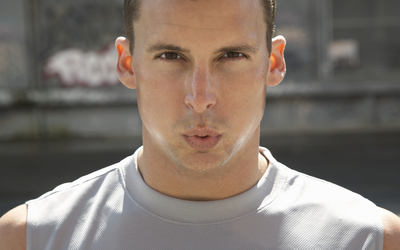How to Breathe When You’re Exercising
It’s as simple as breathing in and breathing out – or is it? When we exercise, getting enough oxygen into the body is vital for our stamina and strength. There is an art to inhaling that most people don’t value enough. The best breathing techniques could improve your stamina and boost your performance, helping you reach your peak fitness. Smooth and efficient breathing can hep the body to perform it’s various functions properly, as well as helping to calm the mind, enable you to exercise for longer, and to put an end to those stitches in your side. When you’re running, getting your breathing right is the difference between a difficult running session around the block and real endurance. Studies have even proven that improper breathing can impair your speed and performance.
There’s no set rule for runners, but most agree that they find it comfortable to take a breath every two foot strikes. This means that you take one left step and one right, whilst breathing in, then two steps whilst breathing out. This works best as your diaphragm and the surrounding organs are at the liberty of gravity, so by getting your breathing in line with your movements you will be able to breathe more comfortably. There is some debate as to whether it is better to breathe through your nose or your mouth, and the studies conclude that breathing through your mouth is the best option as this causes the least amount of resistance – if you are breathing through your nose, you’re making things unnecessarily hard for yourself. Of course, nose breathing does have its benefits, as it increases the CO2 saturation in the blood, which can calm you down. It also helps to minimise the amount of allergens you inhale and to warm the air as it enters the lungs (great for outdoor workouts in the colder months). It depends on what is best for you, so trial both ways of breathing and see which you prefer.
When you’re taking part in high intensity sports, breathing is something of a difficulty. But your breathing is crucial to stabilise your core and postural control muscles. When you’re anticipating a heavy weight or impact, you should take a deep breath and then brace the core – this will help to protect the spine. With any exercise, it’s best to breathe from the diaphragm rather than the chest as this increases the amount of oxygen you can provide to the muscles. Your ribcage should expand in a 3D pattern, top to bottom, back to front and to the sides. Aerobic exercise is just one of the forms of exercise that can benefit from good breathing practices.
The main thing to remember is that you need to breathe out, as many people try and hold their breath subconsciously. Holding the breath increases pressure in the chest cavity, but holding it too long can stop the blood getting back to the heart and can raise your blood pressure. It’s even possible to train your respiratory muscles which has been proven by researchers to improve your performance and stamina, particularly in high-intensity sports. Of course, there are other factors which can impede your breathing – smoking, allergies and asthma can all affect your breathing ability, in particular during exercise sessions. Giving up smoking will improve your breathing, in everyday life and during exercise, but if you’re worried you have asthma or allergies you should speak to your GP who can advise you how to exercise safely and control these conditions.


Comments are closed.